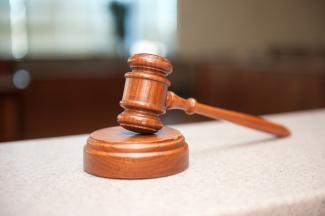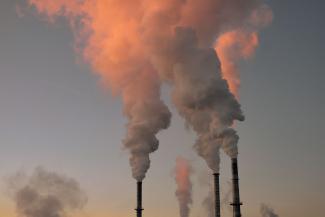Cleaning Up the Duwamish River: Leveraging CERCLA for Environmental Justice (Part I)

This is the first of a two-part series of blog articles discussing CERCLA and environmental justice. Read Part II here.

This is the first of a two-part series of blog articles discussing CERCLA and environmental justice. Read Part II here.

In January, ELI held the first CLE webinar in the new Pro Bono Clearinghouse series, “Community Lawyering for Environmental Justice Part 1: Key Concepts, Skills, and Practice-Oriented Specifics.” The public webinar brought together an engaging panel of justice-oriented attorneys to meaningfully discuss community lawyering.

Part 1 of this two-part blog series provided a background on climate change and internal displacement and underscored the need to develop equitable climate programs. Part 2 provides policy recommendations for the federal government to proactively address the challenges of climate-related displacement.

Climate change-related stressors are expected to drive the displacement of an estimated 200 million people by 2050. Meeting the needs of millions of cross-border climate migrants is a pressing concern at every level of governance. Although President Joseph Biden’s Executive Order No.

Shortly after taking office, President Joseph Biden released Executive Order No. 14008, Tackling the Climate Crisis at Home and Abroad.

Former railroad turned elevated park, the New York City High Line presents a prime example of creating new green spaces to beautify, ameliorate, and revitalize surrounding communities. Although certainly one of the city’s most popular parks, the High Line also serves as the culprit for a sharp 35% increase in adjacent housing values.

What products did you use this morning as you got ready for your day? Shampoo? Soap? Deodorant? Makeup? Likely at least one of these, along with other personal care products. The Environmental Working Group found that women in the United States use an average of 12 personal care products each day, and men an average of six. And, while many of the chemicals in these products likely pose minimal risk, some chemicals found in personal care products have been linked to cancer, reproductive harm, and other health problems. Further, women of color face disproportionate impacts. On average, women of color use more beauty products than white women, and the beauty products they use disproportionately expose them to hazardous ingredients.

Despite popular belief, natural hazards are not “great equalizers.” Environmental burdens fall disproportionately on marginalized groups. These inequities stem from legacies of racial injustice and systemic income disparities that have caused certain neighborhoods to have both poor infrastructure and limited access to financial resources, creating greater threats from hazard-related damage and difficulty with recovery efforts.

This summer, the Miami-Dade County’s Office of Resilience conducted a series of workshops inviting the community’s input into the drafting of the county’s climate action strategy plan. These workshops were held to offer community members the opportunity to comment on local policy measures as well as shape the direction of current and future policymaking by offering suggestions and ideas. Rather than simply checking off boxes for expectations of citizen engagement by local government, the stated goal of these workshops is to produce an accessible avenue for community members from all identities, especially those that have historically faced discrimination, to take the lead on local climate adaptation and mitigation efforts. In accomplishing this goal, language accessibility is a key consideration to ensure effective citizen engagement and maximized impact.

For Environmental Law Institute President Scott Fulton, the inability of the United States’ environmental policies and programs to bestow benefits across communities of color and the disadvantaged stands as a major shortcoming of our environmental protection system to date. But, as discussed at ELI’s 7th GreenTech webinar, on “Technology and Environmental Justice,” the explosion of monitoring technologies, big data, expanded analytical abilities, and other technologies raises the possibility, albeit with caveats, that those developments can help solve long-standing environmental justice (EJ) challenges. Discussing the issues during the July 29, 2021, webinar were the following featured experts: White House Council on Environmental Quality (CEQ) Senior Director for EJ, Dr. Cecilia Martinez; California EJ Alliance (CEJA) Green Zones Program Manager, Tiffany Eng; Tennessee State University (TSU) Associate Professor Dr. David Padgett; Chesapeake Bay Foundation (CBF) EJ Staff Attorney, Taylor Lilley; and ELI Visiting Scholar LeRoy C. (Lee) Paddock.